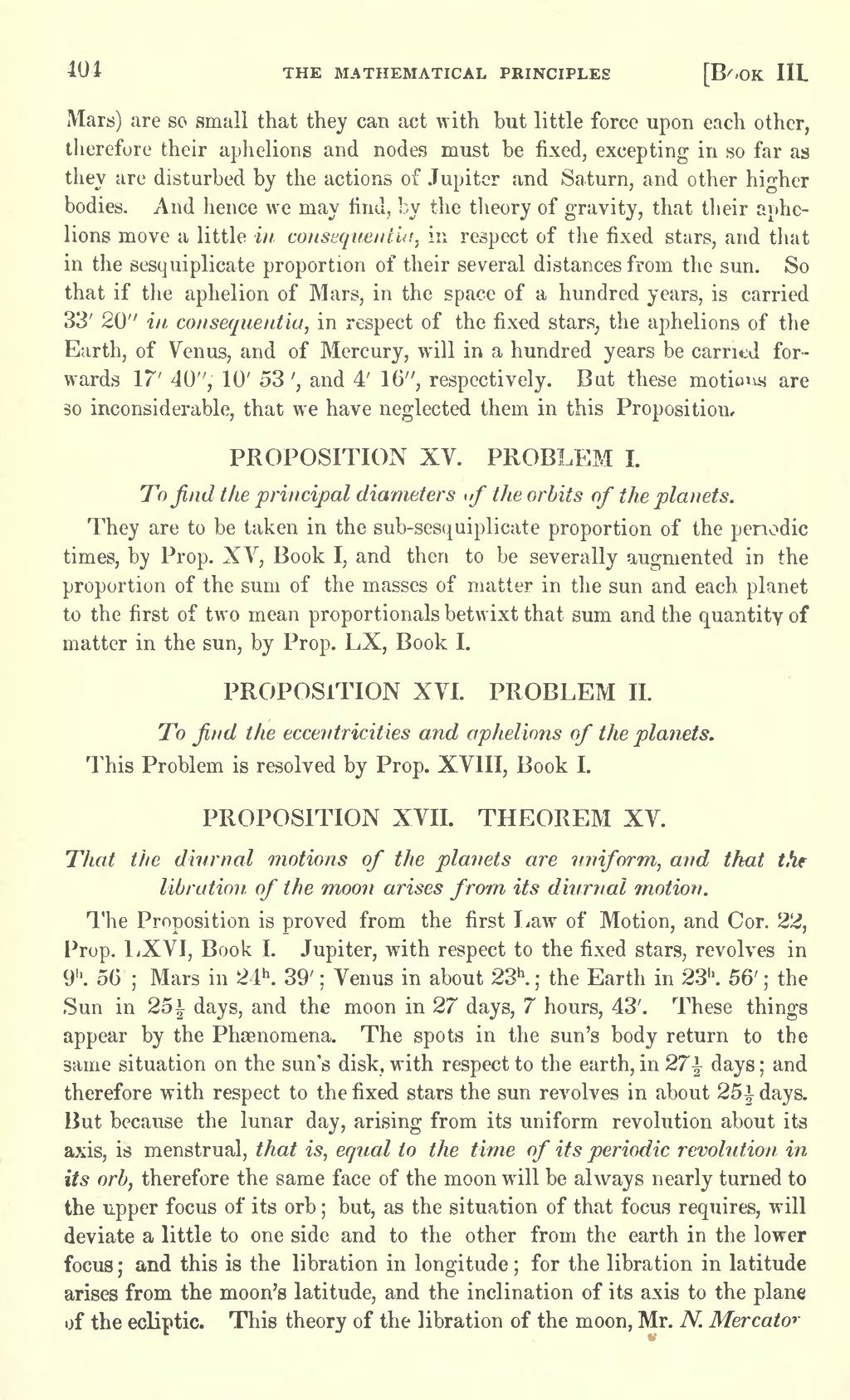Mars) are so small that they can act with but little force upon each other, therefore their aphelions and nodes must be fixed, excepting in so far as they are disturbed by the actions of Jupiter and Saturn, and other higher bodies. And hence we may find, by the theory of gravity, that their aphelions move a little in consequentia, in respect of the fixed stars, and that in the sesquiplicate proportion of their several distances from the sun. So that if the aphelion of Mars, in the space of a hundred years, is carried 33′ 20″ in consequentia, in respect of the fixed stars; the aphelions of the Earth, of Venus, and of Mercury, will in a hundred years be carried forwards 17′ 40″, 10′ 53″, and 4′ 16″, respectively. But these motions are so inconsiderable, that we have neglected them in this Proposition,
PROPOSITION XV. PROBLEM I.
To find the principal diameters of the orbits of the planets.
They are to be taken in the sub-sesquiplicate proportion of the periodic times, by Prop. XV, Book I, and then to be severally augmented in the proportion of the sum of the masses of matter in the sun and each planet to the first of two mean proportionals betwixt that sum and the quantity of matter in the sun, by Prop. LX, Book I.
PROPOSITION XVI. PROBLEM II.
To find the eccentricities and aphelions of the planets.
This Problem is resolved by Prop. XVIII, Book I.
PROPOSITION XVII. THEOREM XV.
That the diurnal motions of the planets are uniform, and that the libration of the moon arises from its diurnal motion.
The Proposition is proved from the first Law of Motion, and Cor. 22, Prop. LXVI, Book I. Jupiter, with respect to the fixed stars, revolves in 9h.56′; Mars in 24h.39′; Venus in about 23h.; the Earth in 23h.56′; the Sun in 25½ days, and the moon in 27 days, 7 hours, 43′. These things appear by the Phænomena. The spots in the sun's body return to the same situation on the sun's disk, with respect to the earth, in 27½ days; and therefore with respect to the fixed stars the sun revolves in about 25½ days. But because the lunar day, arising from its uniform revolution about its axis, is menstrual, that is, equal to the time of its periodic revolution in its orb, therefore the same face of the moon will be always nearly turned to the upper focus of its orb; but, as the situation of that focus requires, will deviate a little to one side and to the other from the earth in the lower focus; and this is the libration in longitude; for the libration in latitude arises from the moon's latitude, and the inclination of its axis to the plane of the ecliptic. This theory of the libration of the moon, Mr. N. Mercator
